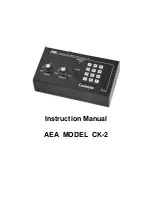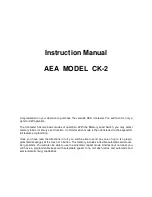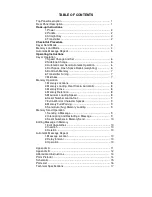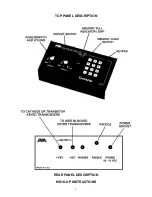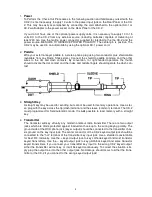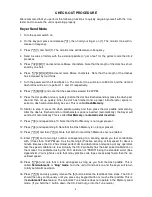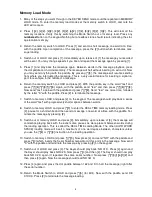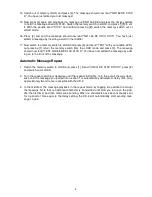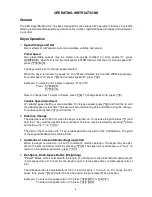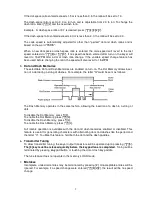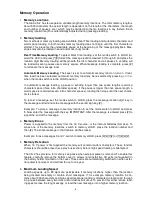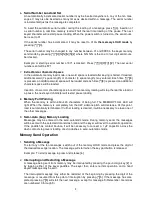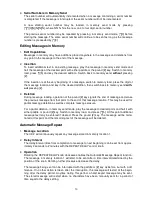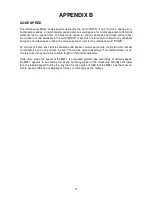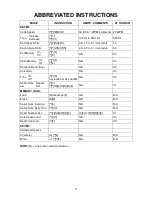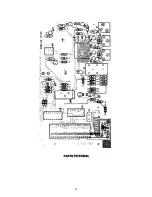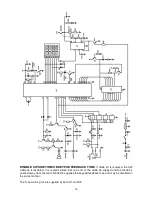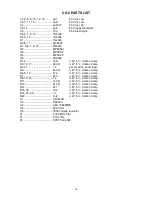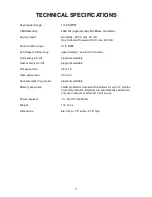
8
Memory Operation
1.
Memory Locations
The AEA CK-2 has ten separate, variable length memory locations. The total memory length is
about 500 characters (the actual length is dependent on the length of the characters, the length
and number of pauses, etc.), which may be divided into the ten locations in any fashion. Each
memory location length is automatically adjusted during message loading.
2.
Memory loading
Two methods of memory loading are available, Real Time loading and Automatic character and
word space loading. In both modes memory loading does not begin until the first character is
started. This prevents the undesirable pause at the beginning of the message playback. Mes-
sages may also be loaded in semi-automatic (bug) mode.
Real Time Memory Loading
. To select Real Time loading, set the mode switch to LOAD (to-
ward the LED) and press [
*
][9] Select the message location desired, 0 through 9, and press the
location digit. Memory loading will begin with the first character and all pauses in sending will
be loaded as sent (pauses use memory space). When message loading is complete, press [#]
to terminate the message load.
Automatic Memory Loading
. The keyer is set to automatic memory load on turn-on. If real-
time load has been selected, automatic memory load may be re-selected by pressing
when the mode switch is in the LOAD position.
In automatic message loading, a pause in sending longer than two space lengths records a
character space (three intra character spaces). If the pause is longer than five space length, a
word space is recorded (seven intra character spaces), loading then stops until the next charac-
ter is started.
To record a message, set the mode switch to LOAD, press the message location digit, key in
the message and terminate the message with the pound sign key [#].
Example: To store a message in memory location 5, set the mode switch to LOAD and press
5. Now enter the message with the key. IMPORTANT: After the message is entered press [#] to
signal the end of the message.
3.
Memory Erase
Power is supplied to the memory from the 13 V source, or the internal batteries (AA size). To
erase one of the memory locations, switch to memory LOAD, press the location number and
then [#]. The entire message in that location will be erased.
Example: Erase messages 3 and 7, switch to memory LOAD, press [3][#][7][#] or [7][#][3][#].
4.
Memory Retention
When 13 V power is first applied the memory will contain random characters. These random
characters should be erased (see previous section) before high speed loading is attempted.
The CK-2 has provision for memory keep-alive when external power is removed. To enable this
feature, carefully remove the bottom cover (4 screws) and install two AA cells (not supplied) in
the battery holder mounted on the cover. These cells are automatically switched on when exter-
nal power is removed, and will last for up to one year.
5.
Maximum Loading Speed
Loading speeds up to 99 wpm are permissable if memory locations higher than the location
being located are empty or contain short messages. If, for example, memory location 5 con-
tains about 300 characters and high speed message loading is attempted in locations 0 through
4 a pause between every two dots and/or dashes will occur. To prevent this either reduce load-
ing speed, erase the long message or load the new message into a higher memory location.

